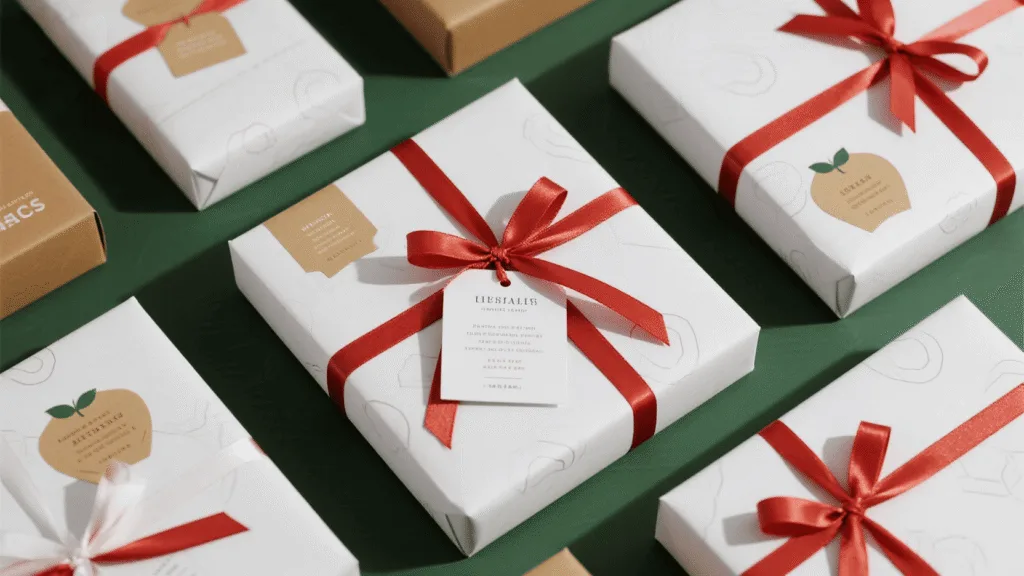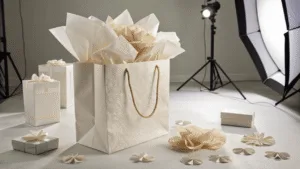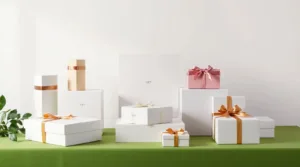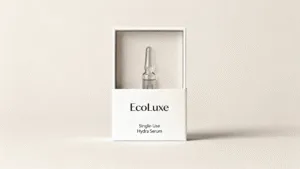You’ve chosen white kraft paper, but it looks plain and unfinished. This can make your premium products seem less valuable, undermining the entire unboxing experience you’ve worked so hard to create.
For white kraft gift wrapping paper, the best printing method is litho-offset for its superior detail and color accuracy. For a luxury feel, hot foil stamping and embossing add unmatched tactile and visual appeal. These techniques transform simple paper into a premium branding tool.
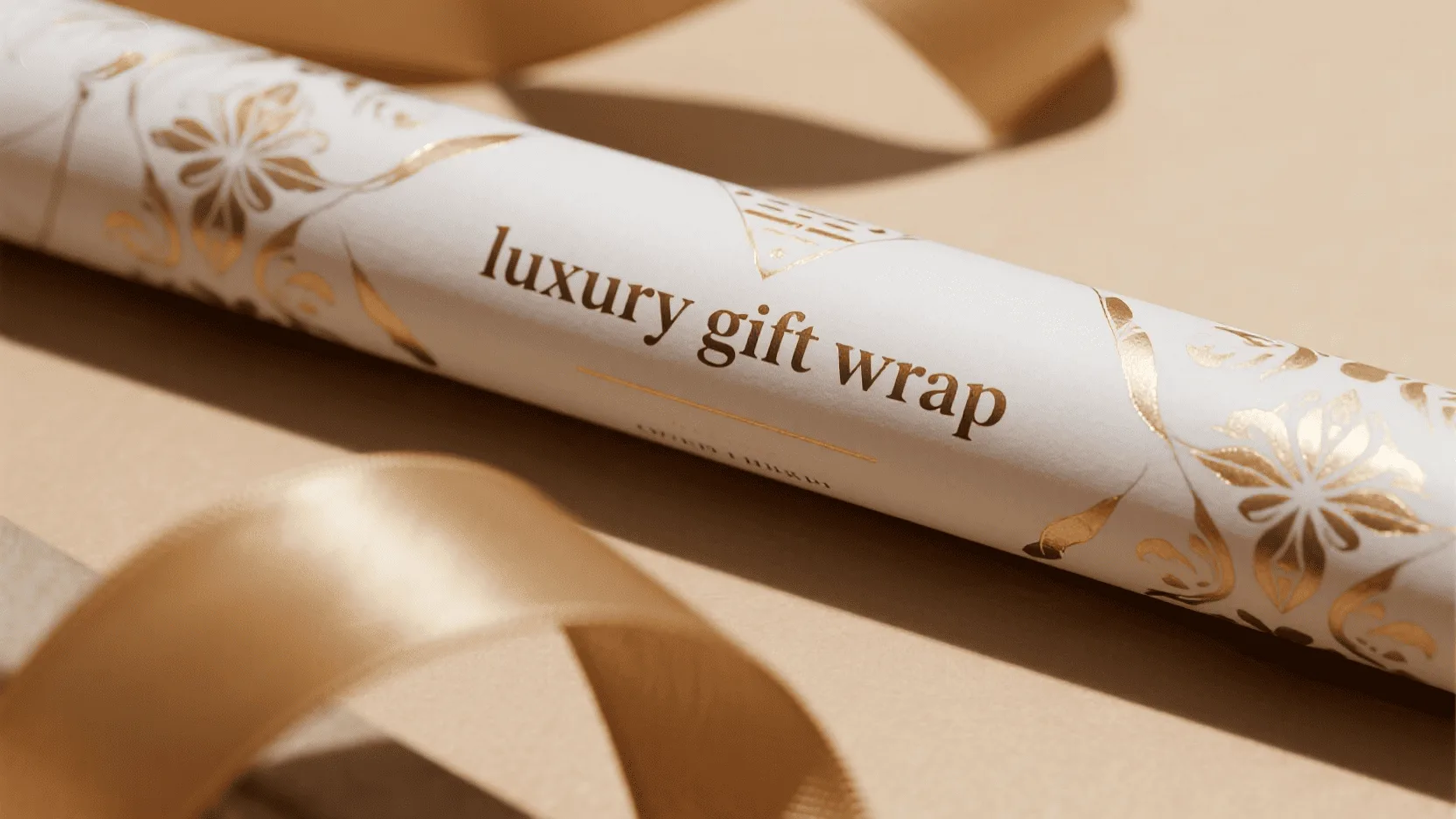
I once worked with a high-end jewelry brand that was incredibly proud of its minimalist aesthetic. They wanted to use our FSC-certified white kraft paper for their gift wrap but were worried it wouldn’t feel special enough. They initially requested a simple one-color logo print. I showed them two samples: one with just the print, and another with the same logo delicately embossed and a tiny brand mark stamped in rose gold foil. The moment the client ran her fingers over the raised logo on the second sample, her entire perspective shifted. She realized that finishing isn’t an add-on; it’s a sensory experience that communicates quality before the gift is even unwrapped.
Which Printing Method Offers the Best Quality for Detailed Designs on White Kraft Paper?
Your current gift wrap has blurry images and inconsistent colors. This poor print quality reflects badly on your brand, suggesting a lack of attention to detail. Choosing the right printing method is essential for a professional look.
Litho-offset printing delivers the highest quality for detailed graphics and precise color matching on white kraft paper. While flexography is cost-effective for large runs of simple patterns, litho-offset is the superior choice for brands that prioritize a sharp, premium print finish.
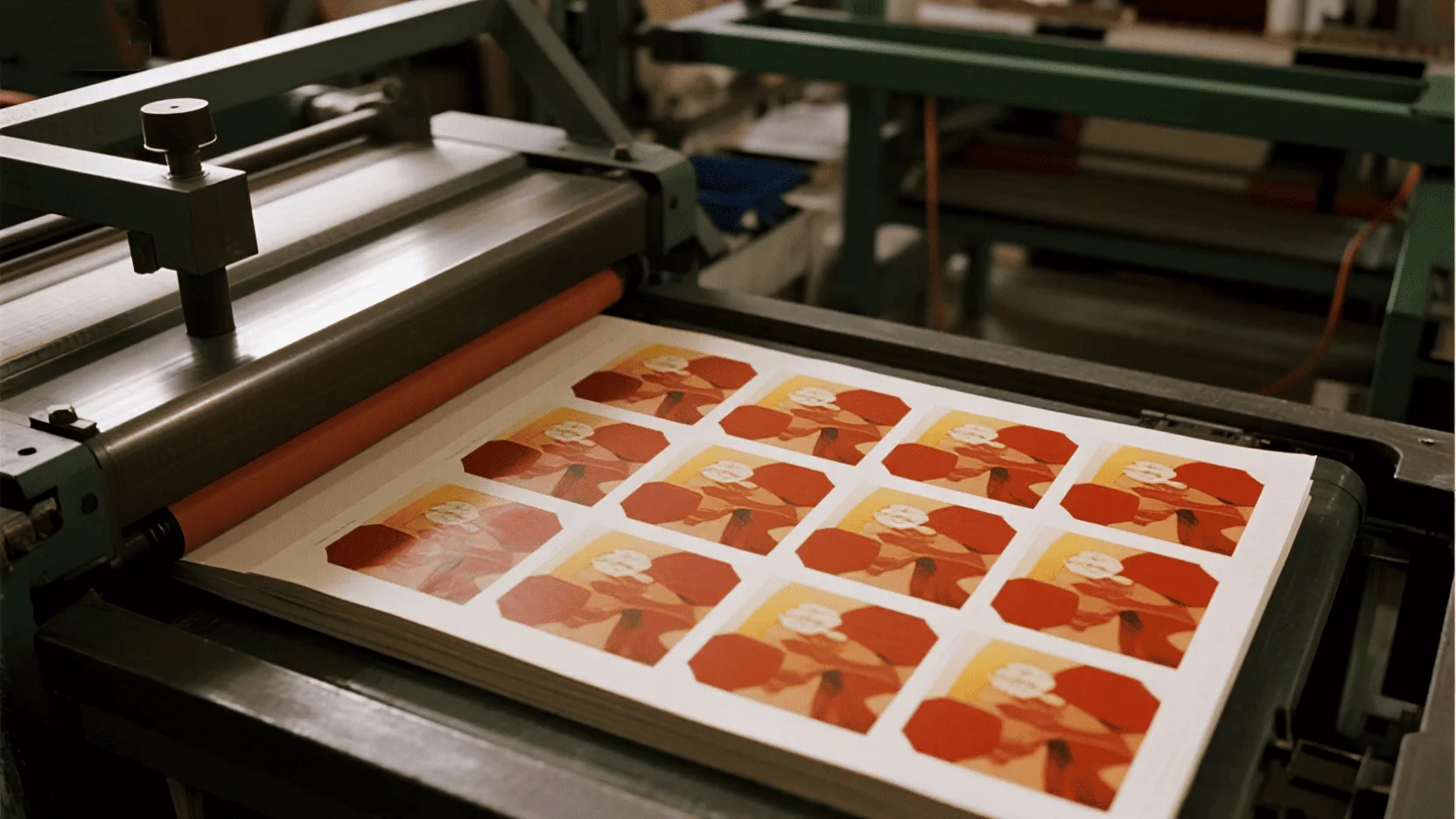
When it comes to printing on the smooth, bright surface of white kraft paper, you have a few excellent options, but the choice depends on your design’s complexity and your order volume. Litho-offset printing is the gold standard for quality. It uses printing plates to transfer ink, resulting in incredibly sharp lines, rich color saturation, and perfect consistency across the entire print run. It’s ideal for intricate patterns, photorealistic images, or designs with subtle color gradients. The setup costs are higher, making it best for larger orders. For simpler designs, like a repeating one-color logo, flexography is a very efficient and cost-effective alternative, especially for massive volumes. Digital printing is also an option for small, custom runs or prototypes, as it has no plate setup fees, but the cost per sheet is higher. For any brand looking to make a high-end impression, I almost always recommend litho-offset to ensure the final product truly reflects their quality standards.
Comparing Printing Techniques for White Kraft Paper
| Printing Method | Best For | Quality | Cost-Effectiveness |
|---|---|---|---|
| Litho-Offset | Detailed, multi-color graphics; premium branding | Highest Quality | Best for medium to large runs |
| Flexography | Simple, repeating patterns; very large runs | Good | Most cost-effective at high volumes |
| Digital Printing | Short runs, prototypes, variable data | Very Good | Best for very small quantities |
How Can Finishing Techniques Add a Premium Tactile Feel to Your Gift Wrap?
Your wrapping paper looks flat and feels generic. It lacks the memorable, sensory element that luxury customers expect. Incorporating tactile finishes will instantly elevate your packaging from a simple covering to a part of the gift itself.
Hot foil stamping and embossing/debossing are the best techniques for adding a premium tactile feel. Foil stamping adds metallic shine that catches the eye, while embossing creates a raised texture that invites touch, both signaling superior quality and craftsmanship.
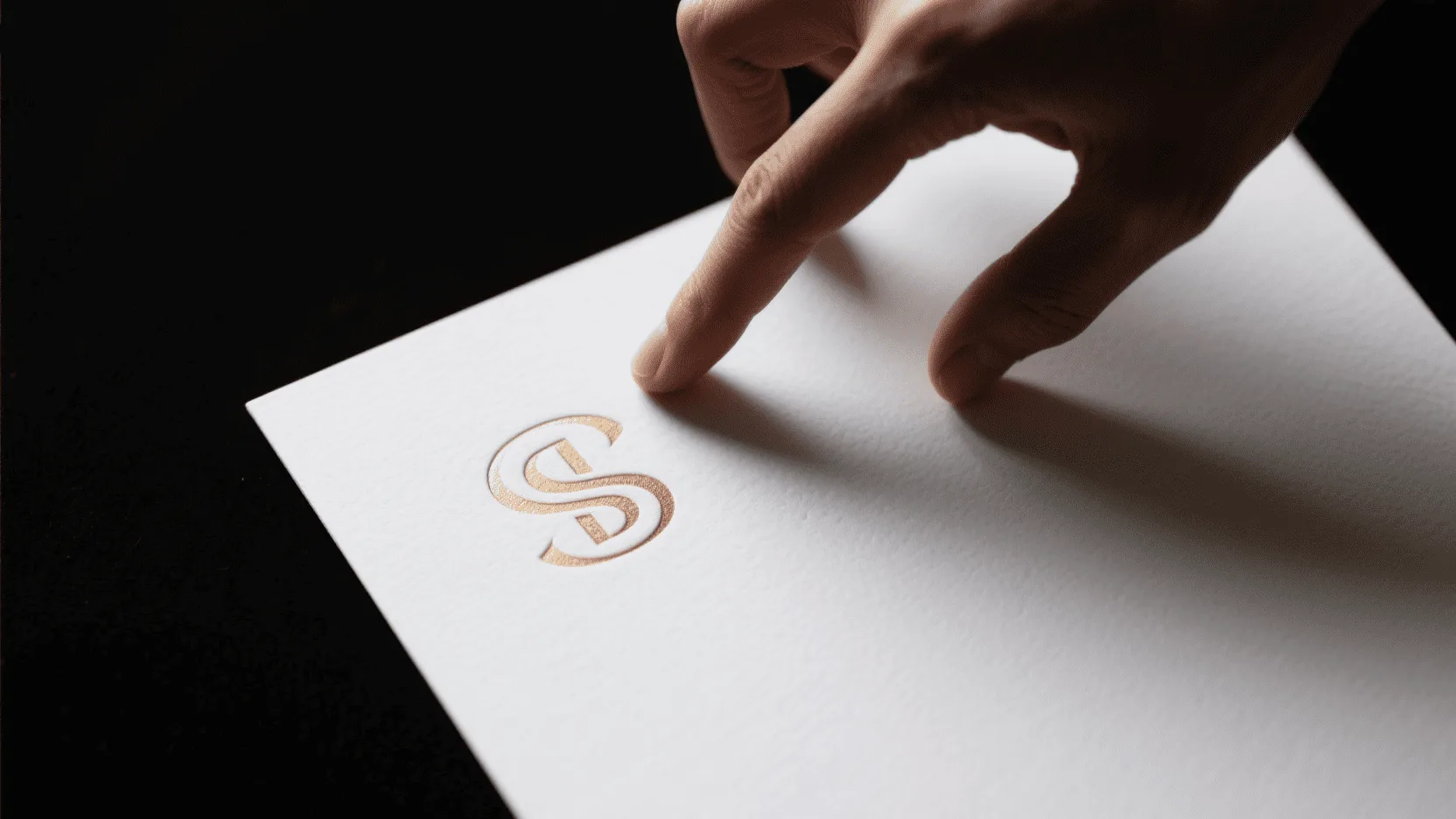
This is where we move from simply decorating paper to creating a sensory experience. A beautiful design is one thing, but when a customer can feel the quality, it builds a much deeper connection. Hot foil stamping is a classic choice for a reason. The process uses heat and pressure to apply a thin layer of metallic foil—like gold, silver, copper, or even holographic effects—to the paper. The result is a crisp, brilliant finish that is impossible to replicate with ink. It instantly communicates luxury. Embossing (raising a pattern) and debossing (recessing a pattern) are more subtle but equally powerful. Creating a raised logo or a textured pattern on the paper adds a third dimension. It encourages the customer to touch and interact with the packaging. Pairing an elegant emboss with a clean design on bright white wrapping paper is the essence of "quiet luxury." It’s a statement of confidence that doesn’t need to shout.
What Are the Best Finishes for Durability and Visual Sheen?
Your beautifully printed paper smudges or scuffs during transit. This ruins the unboxing experience and makes your brand look careless. A protective finish is crucial to ensure your packaging arrives in perfect condition.
For durability, a matte or gloss lamination offers the best protection against scuffs and moisture. For a purely visual enhancement that adds sheen and some scuff resistance, a UV coating is a highly effective and popular choice for premium gift wrap.
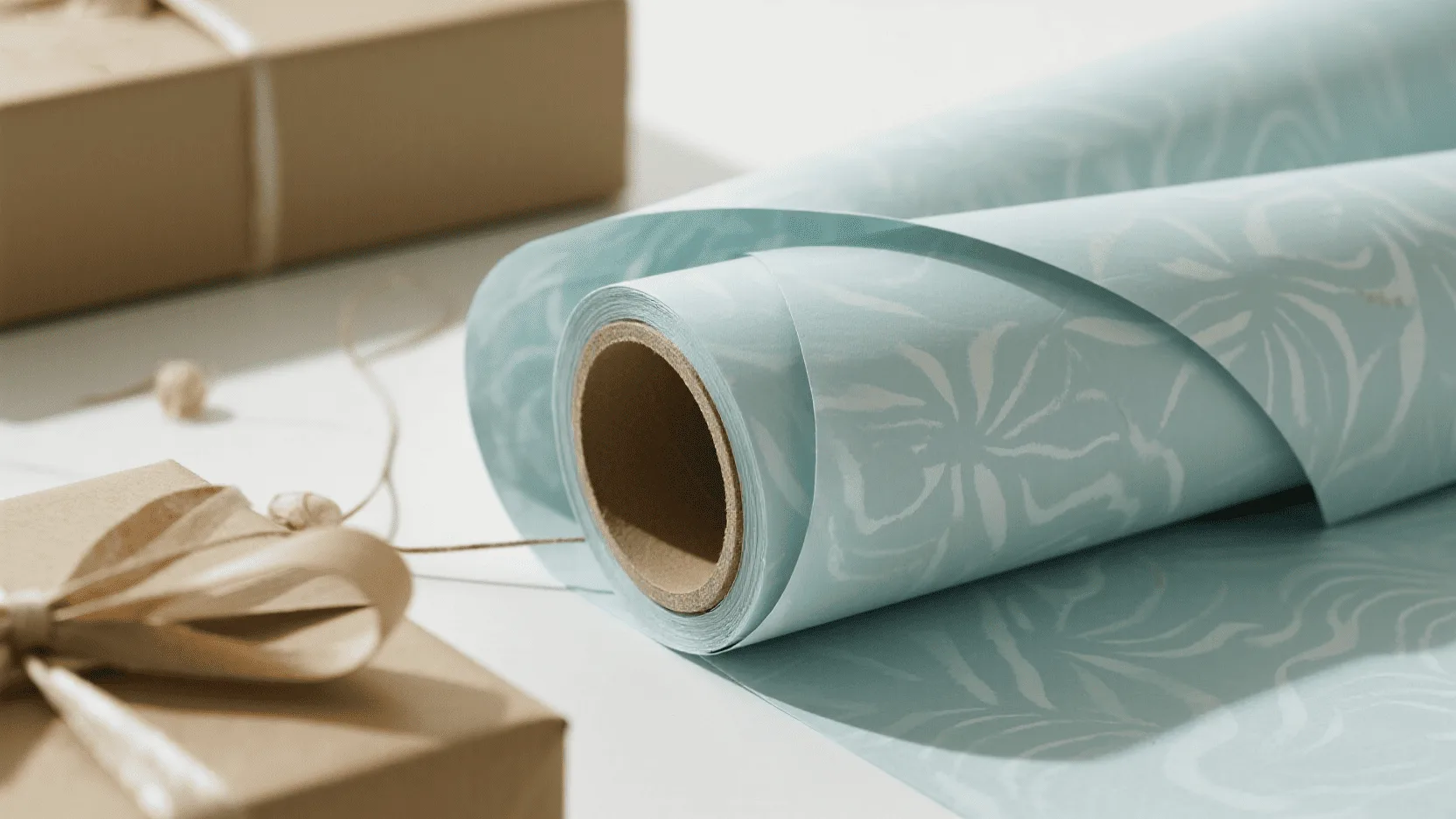
Once you’ve invested in high-quality printing, the last thing you want is for it to get damaged. This is where protective finishes come in. These are clear coatings applied over the ink. A UV coating is a liquid varnish that is cured instantly with ultraviolet light. It can be applied across the entire sheet (flood UV) for a high-gloss look that makes colors pop, or it can be applied to specific areas (spot UV) to create a striking contrast between matte and shiny textures. It adds a good level of scuff resistance. For maximum durability, especially for e-commerce brands where packaging endures a lot in shipping, I recommend lamination. This process bonds a very thin plastic film to the paper. A gloss lamination gives a shiny, wet look and is highly durable, while a matte lamination provides a soft, elegant, and non-reflective finish that feels very modern and luxurious. While lamination adds cost, it provides peace of mind that your gift packaging will arrive looking flawless.
Conclusion
Transforming white kraft paper from a basic material into a luxurious brand statement is all about the right techniques. Combining high-quality litho-offset printing with elegant finishes like foil stamping, embossing, or protective coatings ensures your gift wrap looks, feels, and performs to the highest standard.
Ready to create gift wrap that truly represents your brand? Explore our custom solutions and let’s bring your vision to life.
FAQ
Are finishing techniques like foil stamping and UV coating sustainable?
Sustainability is a key concern. Many modern foils are now designed to be fully recyclable with the paper stream. For coatings, water-based varnishes are an excellent eco-friendly alternative to UV coatings, offering good protection with less environmental impact. We always recommend using FSC-certified paper as your base.
What is the difference between embossing and debossing?
Embossing creates a raised impression by pushing the design up from the back of the paper. Debossing is the opposite; it creates a recessed impression by stamping the design down from the front. Both add a sophisticated, tactile element to your wrapping paper.
Can I combine multiple finishing techniques on one design?
Yes, and this is often how the most impressive designs are made. A popular combination is to print a pattern with litho-offset, add a foil-stamped logo, and then use spot UV to highlight another element. Combining techniques creates a rich, multi-sensory experience for the customer.

